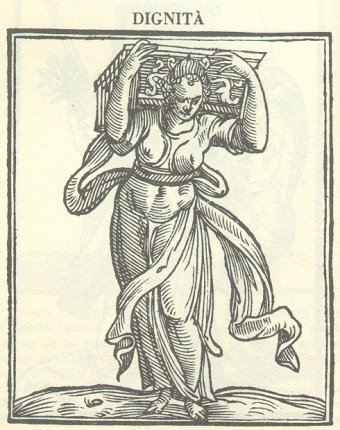|
Universal Declaration On The Human Genome And Human Rights
The Universal Declaration on the Human Genome and Human Rights is a document that was issued by the United Nations Educational, Scientific and Cultural Organization (UNESCO) at its 29th session in 1997. It was unanimously passed by the seventy-seven national delegations in attendance.Mike Pezzella, "International officials adopt rules covering cloning, gene research," ''Biotechnology Newswatch'', 17 November 1997, p. 1. The declaration is perhaps best known for its statement against human cloning and abuse of human genome against human dignity. The first article of the Declaration states that "The human genome underlies the fundamental unity of all members of the human family, as well as the recognition of their inherent dignity and diversity. In a symbolic sense, it is the heritage of humanity", article 2 that "Everyone has a right to respect for their dignity and their rights regardless of their genetic characteristics" and article 10 that "No research or research application conc ... [...More Info...] [...Related Items...] OR: [Wikipedia] [Google] [Baidu] |
United Nations Educational, Scientific And Cultural Organization
The United Nations Educational, Scientific and Cultural Organization is a specialized agency of the United Nations (UN) aimed at promoting world peace and security through international cooperation in education, arts, sciences and culture. It has 193 member states and 12 associate members, as well as partners in the non-governmental, intergovernmental and private sector. Headquartered at the World Heritage Centre in Paris, France, UNESCO has 53 regional field offices and 199 national commissions that facilitate its global mandate. UNESCO was founded in 1945 as the successor to the League of Nations's International Committee on Intellectual Cooperation.English summary). Its constitution establishes the agency's goals, governing structure, and operating framework. UNESCO's founding mission, which was shaped by the Second World War, is to advance peace, sustainable development and human rights by facilitating collaboration and dialogue among nations. It pursues this objective th ... [...More Info...] [...Related Items...] OR: [Wikipedia] [Google] [Baidu] |
Human Cloning
Human cloning is the creation of a genetically identical copy (or clone) of a human. The term is generally used to refer to artificial human cloning, which is the reproduction of human cells and tissue. It does not refer to the natural conception and delivery of identical twins. The possibility of human cloning has raised controversies. These ethical concerns have prompted several nations to pass laws regarding human cloning. Two commonly discussed types of human cloning are ''therapeutic cloning'' and ''reproductive cloning''. Therapeutic cloning would involve cloning cells from a human for use in medicine and transplants. It is an active area of research, but is not in medical practice anywhere in the world, as of . Two common methods of therapeutic cloning that are being researched are somatic-cell nuclear transfer and (more recently) pluripotent stem cell induction. Reproductive cloning would involve making an entire cloned human, instead of just specific cells or tissues ... [...More Info...] [...Related Items...] OR: [Wikipedia] [Google] [Baidu] |
Human Genome
The human genome is a complete set of nucleic acid sequences for humans, encoded as DNA within the 23 chromosome pairs in cell nuclei and in a small DNA molecule found within individual mitochondria. These are usually treated separately as the nuclear genome and the mitochondrial genome. Human genomes include both protein-coding DNA sequences and various types of DNA that does not encode proteins. The latter is a diverse category that includes DNA coding for non-translated RNA, such as that for ribosomal RNA, transfer RNA, ribozymes, small nuclear RNAs, and several types of regulatory RNAs. It also includes promoters and their associated gene-regulatory elements, DNA playing structural and replicatory roles, such as scaffolding regions, telomeres, centromeres, and origins of replication, plus large numbers of transposable elements, inserted viral DNA, non-functional pseudogenes and simple, highly-repetitive sequences. Introns make up a large percentage of non-coding DNA. ... [...More Info...] [...Related Items...] OR: [Wikipedia] [Google] [Baidu] |
Biology
Biology is the scientific study of life. It is a natural science with a broad scope but has several unifying themes that tie it together as a single, coherent field. For instance, all organisms are made up of cells that process hereditary information encoded in genes, which can be transmitted to future generations. Another major theme is evolution, which explains the unity and diversity of life. Energy processing is also important to life as it allows organisms to move, grow, and reproduce. Finally, all organisms are able to regulate their own internal environments. Biologists are able to study life at multiple levels of organization, from the molecular biology of a cell to the anatomy and physiology of plants and animals, and evolution of populations.Based on definition from: Hence, there are multiple subdisciplines within biology, each defined by the nature of their research questions and the tools that they use. Like other scientists, biologists use the sc ... [...More Info...] [...Related Items...] OR: [Wikipedia] [Google] [Baidu] |
Genetics
Genetics is the study of genes, genetic variation, and heredity in organisms.Hartl D, Jones E (2005) It is an important branch in biology because heredity is vital to organisms' evolution. Gregor Mendel, a Moravian Augustinian friar working in the 19th century in Brno, was the first to study genetics scientifically. Mendel studied "trait inheritance", patterns in the way traits are handed down from parents to offspring over time. He observed that organisms (pea plants) inherit traits by way of discrete "units of inheritance". This term, still used today, is a somewhat ambiguous definition of what is referred to as a gene. Trait inheritance and molecular inheritance mechanisms of genes are still primary principles of genetics in the 21st century, but modern genetics has expanded to study the function and behavior of genes. Gene structure and function, variation, and distribution are studied within the context of the cell, the organism (e.g. dominance), and within the ... [...More Info...] [...Related Items...] OR: [Wikipedia] [Google] [Baidu] |
Human Rights
Human rights are Morality, moral principles or Social norm, normsJames Nickel, with assistance from Thomas Pogge, M.B.E. Smith, and Leif Wenar, 13 December 2013, Stanford Encyclopedia of PhilosophyHuman Rights Retrieved 14 August 2014 for certain standards of human behaviour and are regularly protected in Municipal law, municipal and international law. They are commonly understood as inalienable,The United Nations, Office of the High Commissioner of Human RightsWhat are human rights? Retrieved 14 August 2014 fundamental rights "to which a person is inherently entitled simply because she or he is a human being" and which are "inherent in all human beings",Burns H. Weston, 20 March 2014, Encyclopædia Britannicahuman rights Retrieved 14 August 2014. regardless of their age, ethnic origin, location, language, religion, ethnicity, or any other status. They are applicable everywhere and at every time in the sense of being Universality (philosophy), universal, and they are Egalitari ... [...More Info...] [...Related Items...] OR: [Wikipedia] [Google] [Baidu] |
Fundamental Freedoms
Fundamental rights are a group of rights that have been recognized by a high degree of protection from encroachment. These rights are specifically identified in a constitution, or have been found under due process of law. The United Nations' Sustainable Development Goal 16, established in 2015, underscores the link between promoting human rights and sustaining peace. List of important rights Some universally recognised rights that are seen as fundamental, i.e., contained in the United Nations Universal Declaration of Human Rights, the U.N. International Covenant on Civil and Political Rights, or the U.N. International Covenant on Economic, Social and Cultural Rights, include the following: * Right to self-determination * Right to liberty * Right to due process of law * Right to freedom of movement * Right to privacy * Right to freedom of thought * Right to freedom of religion * Right to freedom of expression * Right to peaceful assembly * Right to freedom of association ... [...More Info...] [...Related Items...] OR: [Wikipedia] [Google] [Baidu] |
Human Dignity
Dignity is the right of a person to be valued and respected for their own sake, and to be treated ethically. It is of significance in morality, ethics, law and politics as an extension of the Enlightenment-era concepts of inherent, inalienable rights. The term may also be used to describe personal conduct, as in "behaving with dignity". Etymology The English word "dignity", attested from the early 13th century, comes from Latin ''dignitas'' (worthiness) by way of French ''dignité''. Modern use English-speakers often use the word "dignity" in proscriptive and cautionary ways: for example, in politics it can be used to critique the treatment of oppressed and vulnerable groups and peoples, but it has also been applied to cultures and sub-cultures, to religious beliefs and ideals, and even to animals used for food or research. "Dignity" also has descriptive meanings pertaining to the ''worth'' of human beings. In general, the term has various functions and meanings depen ... [...More Info...] [...Related Items...] OR: [Wikipedia] [Google] [Baidu] |
Common Heritage Of Mankind
Common heritage of humanity (also termed the common heritage of mankind, common heritage of humankind or common heritage principle) is a principle of international law that holds the defined territorial areas and elements of humanity's common heritage (cultural and natural) should be held in trust for future generations and be protected from exploitation by individual nation states or corporations. Origins In tracing the origins of the common heritage principle, it is important to distinguish its history as a term from its conceptual history. The common heritage principle was developed under different names, including common "heritage", common "property", and common "patrimony" of mankind. These terms have at times described different concepts; for instance, in 1813 the "property of mankind" might mean the arts and sciences, rather than items or areas. By the early 20th century, "common heritage" and similar terms usually referred to areas and the resources in them, while other ref ... [...More Info...] [...Related Items...] OR: [Wikipedia] [Google] [Baidu] |

.jpg)

